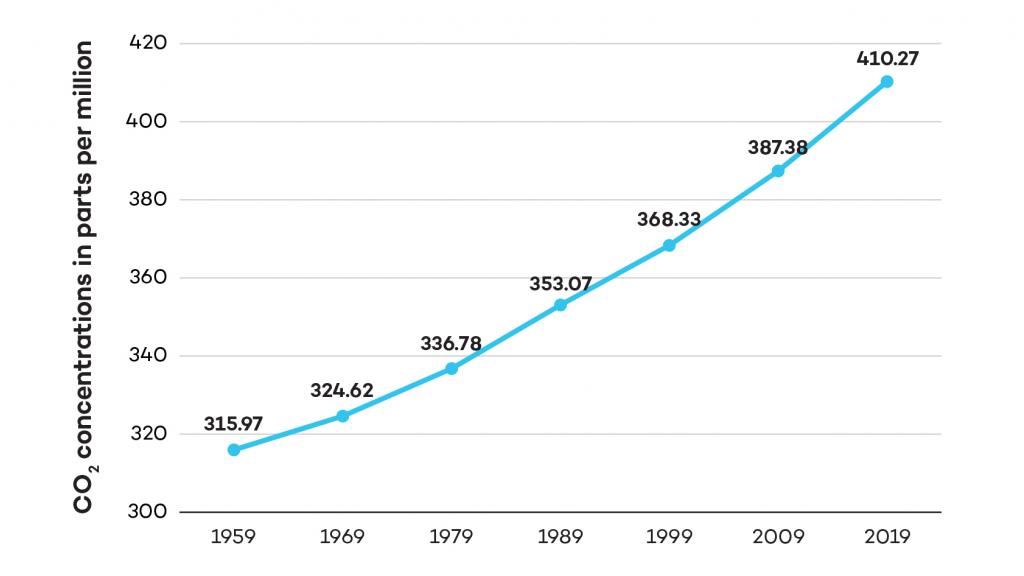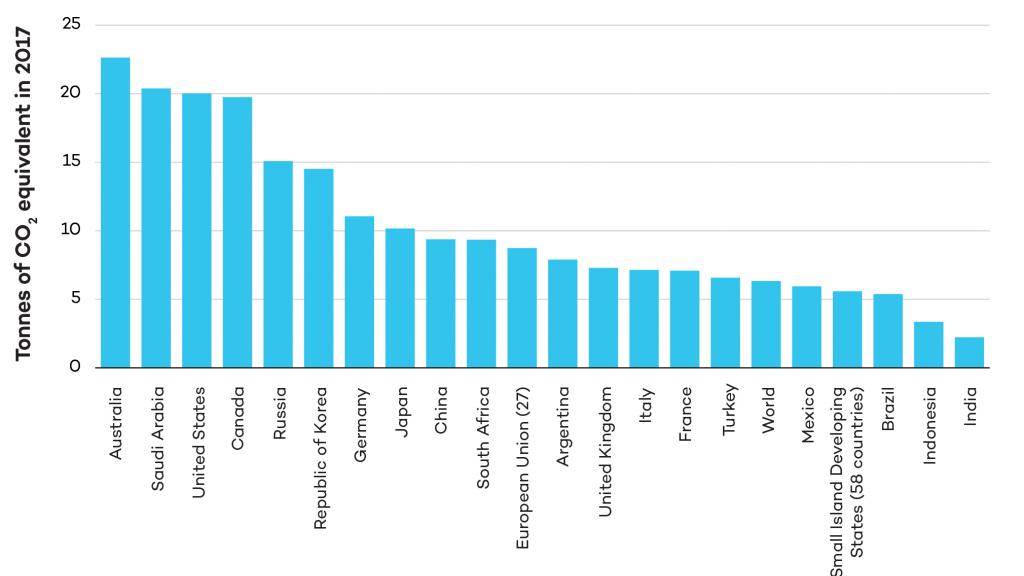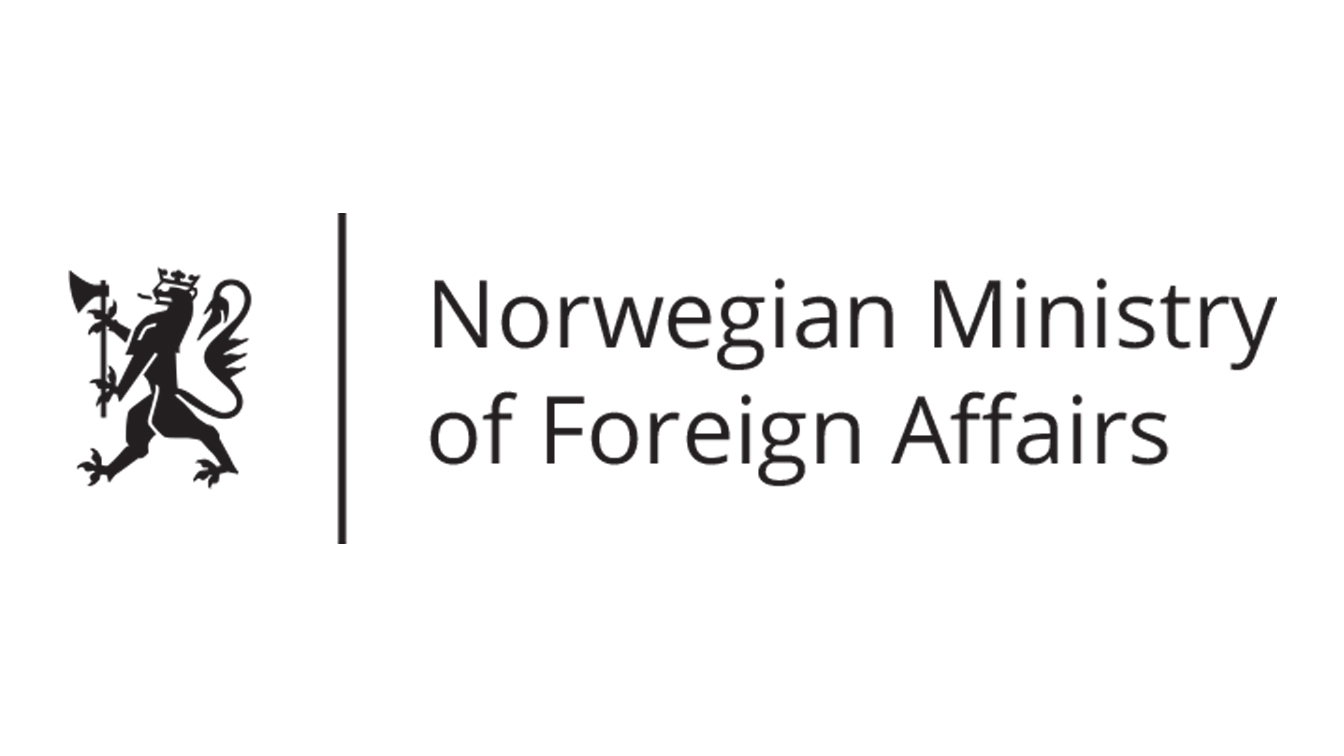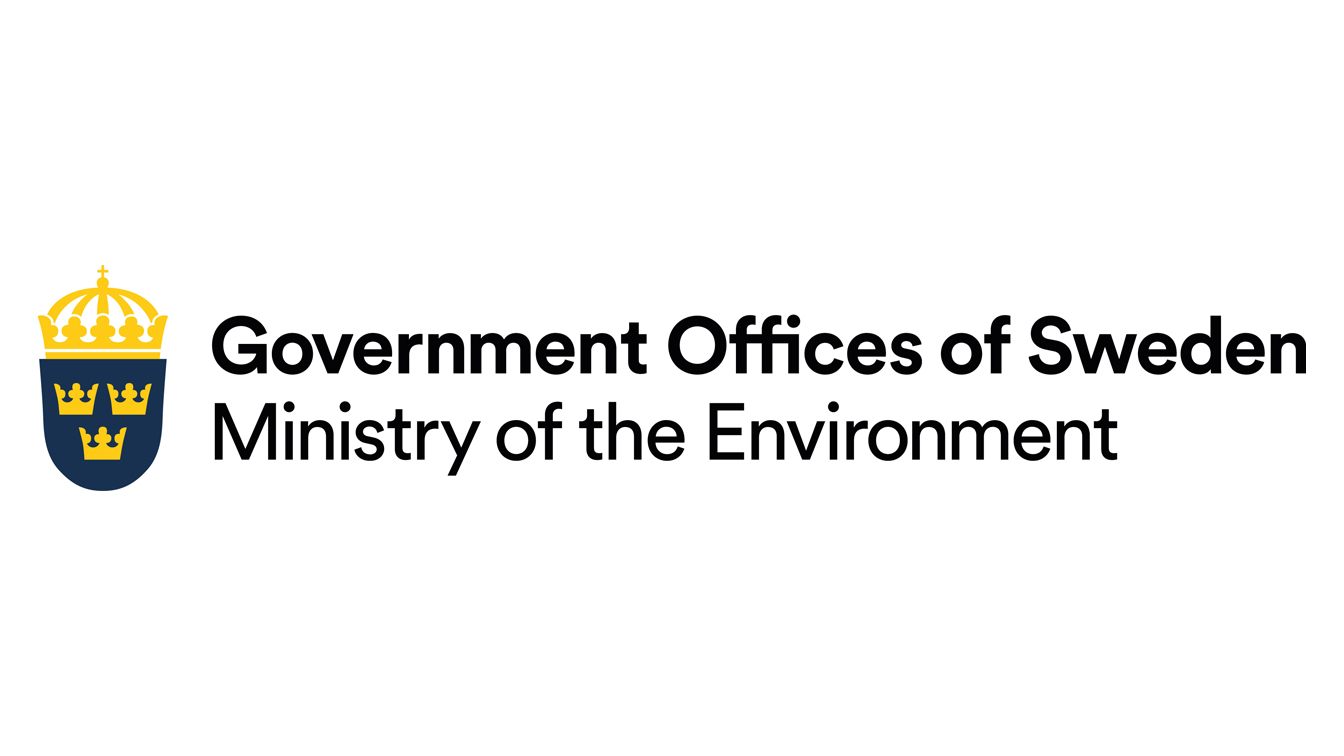Global Climate Change Governance: The search for effectiveness and universality
Still Only One Earth: Lessons from 50 years of UN sustainable development policy
Countries aim to hold global average temperature rise well below 2°C and, if possible, 1.5°C, in line with recommendations from scientists. However, their collective emission reduction pledges are far from sufficient. What efforts and disputes have led the planet to this crisis? (Download PDF) (See all policy briefs) (Subscribe to ENB)
After decades of rising global greenhouse gas (GHG) emissions, global average temperature has climbed 1.1°C above the pre-industrial era. The 2010s were the hottest decade on record. Over the past 20 years, an estimated 500,000 people died and US$3.5 trillion was lost as a result of extreme weather events, according to Germanwatch. Extended heatwaves across Asia and Europe and wildfires in Australia and North America have caused major damage in recent years. Countries are suffering from recurrent natural catastrophes compounded by climate change, including tropical storms and monsoon rains. Sea-level rise is threatening livelihoods and entire societies in low-lying areas and small island states. In fragile states, climate change is exacerbating forced migration and food insecurity.
In 2015, governments adopted the Paris Agreement, agreeing to hold global average temperature rise “well below 2°C” and, if possible, 1.5°C. To meet this target, the UN Environment Programme estimates emissions need to fall between a fourth to less than half of current levels over the next decade (UNEP, 2019). But countries’ collective emission reduction pledges remain far from sufficient: if implemented, they would lead to a temperature increase of more than 3°C, with devastating consequences for both ecosystems and humans (UNEP, 2019).
Atmospheric concentration of Carbon Dioxide at Mauna Loa, Hawaii: 1959-2019
Building a Multilateral Regime
While climate change was not on the agenda at the Stockholm Conference on the Human Environment, just seven years later at the World Meteorological Organization’s (WMO) 1979 World Climate Conference, scientists identified the burning of fossil fuels, deforestation, and changes in land use as the drivers of rising atmospheric carbon dioxide concentrations and, consequently, climatic changes. They predicted global-scale effects would be visible by the end of the 20th century, and called for global cooperation, including helping developing countries better understand the challenge.
This call for a global response was justified. Because the atmosphere knows no borders, climate change is a “global commons problem.” Assigning responsibility for GHG emissions over time and across countries, however, has proven difficult. In fact, much of international climate change policy over the past decades has revolved around this central question.
In Paris, we have seen many revolutions. The most beautiful, most peaceful revolution has been achieved, a climate revolution.
Two themes run across the story of global climate change governance. One is how to differentiate between countries’ responsibilities to respond to the challenge. The other is the quest for a dynamic mechanism that is effective enough from a scientific perspective and encourages sufficient participation from the largest emitters, while also ensuring universal participation.
From a Convention to a Protocol: Principles and burden-sharing
In 1988, the WMO and UNEP established the Intergovernmental Panel on Climate Change (IPCC), which was charged with providing policymakers with regular scientific assessments on the current state of knowledge about climate change. Its First Assessment Report in 1990 provided the scientific basis for the negotiation of the UN Framework Convention on Climate Change (UNFCCC) (Zillman, 2009), which the UN General Assembly called for in resolution 45/212 later that year.
The UNFCCC set the objective of “stabilization of GHG concentrations in the atmosphere at a level that would prevent dangerous anthropogenic interference with the climate system” (Article 2). Its adoption in 1992 and its entry into force in 1994 were helped by the absence of any legally binding targets to reduce GHG emissions and intentionally ambiguous wording (Gupta, 2014). The convention, nevertheless, required Annex I parties (forty industrialized countries and economies in transition) to reduce their GHG emissions to 1990 levels by the year 2000. Industrialized countries further agreed to provide financial and other forms of support to developing countries for climate action. The principle of “common but differentiated responsibilities” (CBDR) became the backbone of the UNFCCC. It acknowledges all states have a shared obligation to address climate change but are not equally responsible. However, while countries agreed “developed countries should take the lead,” they disagreed on whether this was because of their historical responsibility or their stronger capabilities, or both (Biniaz, 2016, 40).
The UNFCCC also allowed for adopting a protocol with legally binding obligations. Negotiations to this end began at the first meeting of the Conference of the Parties (COP) in 1995. Two years later, governments adopted the Kyoto Protocol, which set a time-bound, quantitative limit on developed countries’ emissions. During the protocol’s first commitment period (2008–2012), developed countries were expected to collectively reduce their emissions by an average of 5.2% below 1990 levels.
The protocol took over seven years to enter into force since it had to be ratified by 55 countries representing 55% of total Annex I countries’ GHG emissions. In the meantime, governments had to develop a detailed rulebook, including for three new “flexibility mechanisms” for trading and offsetting emissions. This rulebook, known as the Marrakesh Accords, was adopted in 2001. However, the United States, the world’s largest historic emitter and an influential actor in the protocol’s design, backed away from the treaty. US President George W. Bush cited concerns that since developing countries, like China, did not have to reduce their emissions, they would have an unfair economic advantage.
Kyoto was a very important political signal […] Unfortunately, it didn’t have its full force because the US didn’t join in… That rejection coloured everything that followed.
The Kyoto Protocol is a mitigation-centric, “top-down” instrument: it dictated an absolute cap on emissions to be divided among developed countries. However, despite being responsible for three-fourths of historical cumulative emissions, by the early 2000s developed countries only accounted for half of global annual GHG emissions, while emissions in developing countries were growing twice as fast (Baumert et al., 2005). Due to developing countries’ opposition, however, Kyoto lacked references to even voluntary commitments by non-Annex I parties (Bettelli et al., 1997).
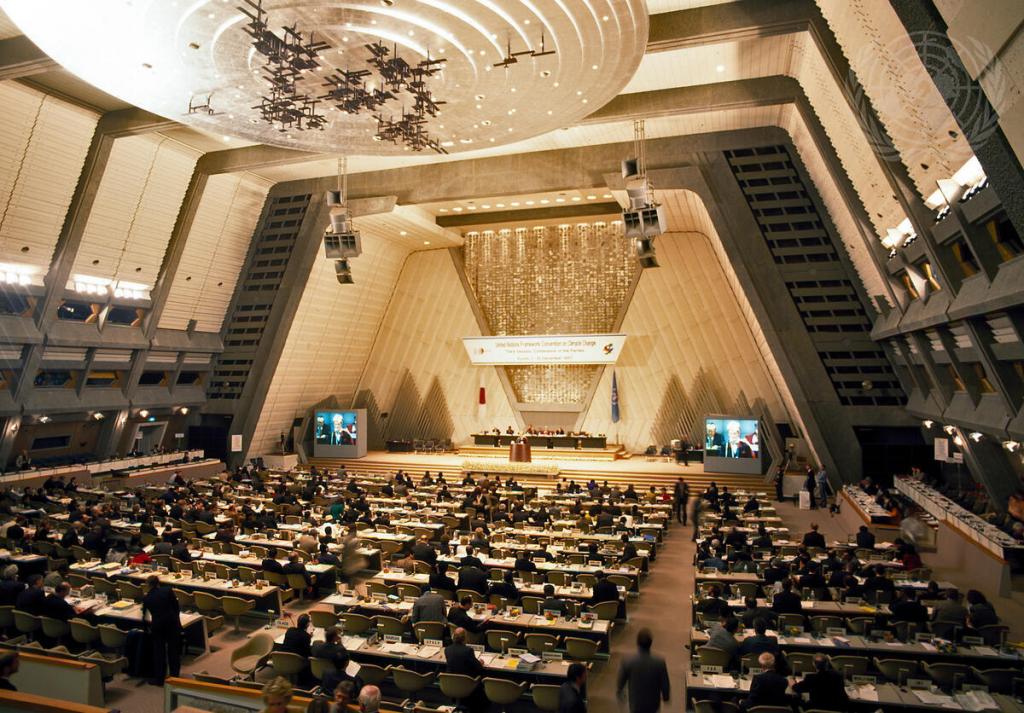
Long-term Cooperative Action and the Rise of Pledge-and-Review
As the 2000s progressed, the world was increasingly conscious of the need to boost developed countries’ ambition while also reducing developing countries’ emissions. The negative impacts of climate change were starting to be felt around the world. The IPCC’s Third Assessment Report in 2001 observed “shrinkage of glaciers, thawing of permafrost, later freezing and earlier break-up of ice on rivers and lakes, […] declines of some plant and animal populations, and earlier flowering of trees, emergence of insects, and egg-laying in birds.” A year later, the Ministerial Declaration adopted at COP 8 in New Delhi recognized that “climate change could endanger future well-being, ecosystems and economic progress in all regions,” but particularly in the least developed countries and small island developing states.
The regime needed to identify “options for future cooperation in a manner that reflect[ed] the full range of interests” (Aguilar et al., 2005). These included adaptation to the negative impacts of climate change in developing countries, as well as support for their mitigation and adaptation efforts, in particular finance, technology transfer, and capacity building. The UNFCCC had already held discussions focused on adaptation and support, and established the Adaptation Fund, financed through a share of proceeds from Kyoto offsetting revenues. Non-Annex I countries, however, still saw legally binding, quantitative emission reduction targets as a cap on their development.
Even before the Kyoto Protocol entered into force, attention turned to the question of what would happen when the first Kyoto commitment period ended in 2012. In 2007, parties agreed on a new two-track negotiating process, the Bali Action Plan, with one track focused on the Kyoto Protocol’s second commitment period and the other on long-term cooperative action under the UNFCCC, which could include the United States and others that had not ratified the protocol. For the latter, the Bali Action Plan laid out thematic “building blocks,” including mitigation, adaptation, technology, and finance. It also contained the first formal reference to “loss and damage” associated with climate change impacts—an issue particularly important for small island states. Loss and damage occurs when climate change impacts are no longer preventable through adaptation measures or avoidable through global emission reductions. They can be caused by slow onset events, such as sea level rise, or extreme weather events like hurricanes.
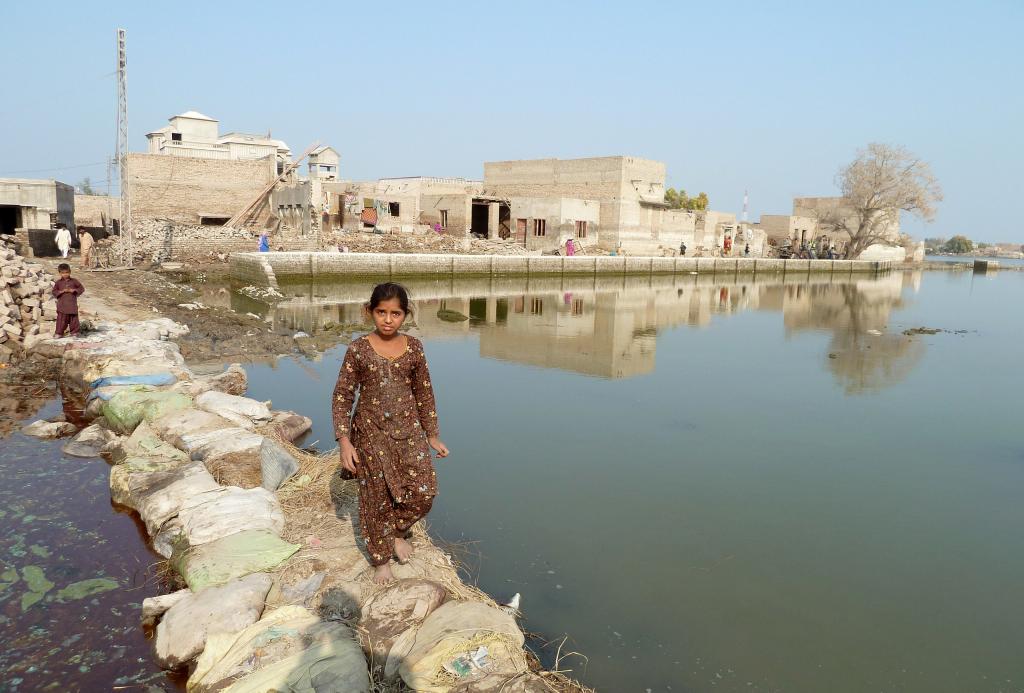
A central theme in the discussions was whether some developing countries should “graduate” toward more binding forms of commitments. The Bali Action Plan for the first time used language on “developed” and “developing” instead of referring to the Annexes (Appleton, et al. 2007). Suggestions on how differentiation could be redefined included various criteria, such as countries’ evolving capabilities or economic development, which could be measured through gross domestic product (GDP) or emissions per capita. Many developing countries—wealthier ones in particular—disagreed with this approach, emphasizing historical responsibility. Others were concerned Annex I countries would backslide from their existing commitments (Akanle, 2008).
Expectations were high for the 2009 Copenhagen Climate Change Conference, where the new agreement was supposed to be adopted. Adding weight to the task, the IPCC’s Fourth Assessment Report concluded “warming of the climate system is unequivocal” and continued emissions will increase “the likelihood of severe, pervasive and irreversible impacts for people and ecosystems.”
By the start of the conference, parties were nowhere close to agreement and managing the complex agenda in a transparent and inclusive manner became quite challenging. High-level representatives, including Heads of State, from major economies and coalitions reached an agreement behind closed doors. Yet, when the agreement was presented to the plenary, a number of developing countries who felt excluded from this process blocked its formal adoption. As a result, the conference merely “took note” of the Copenhagen Accord.
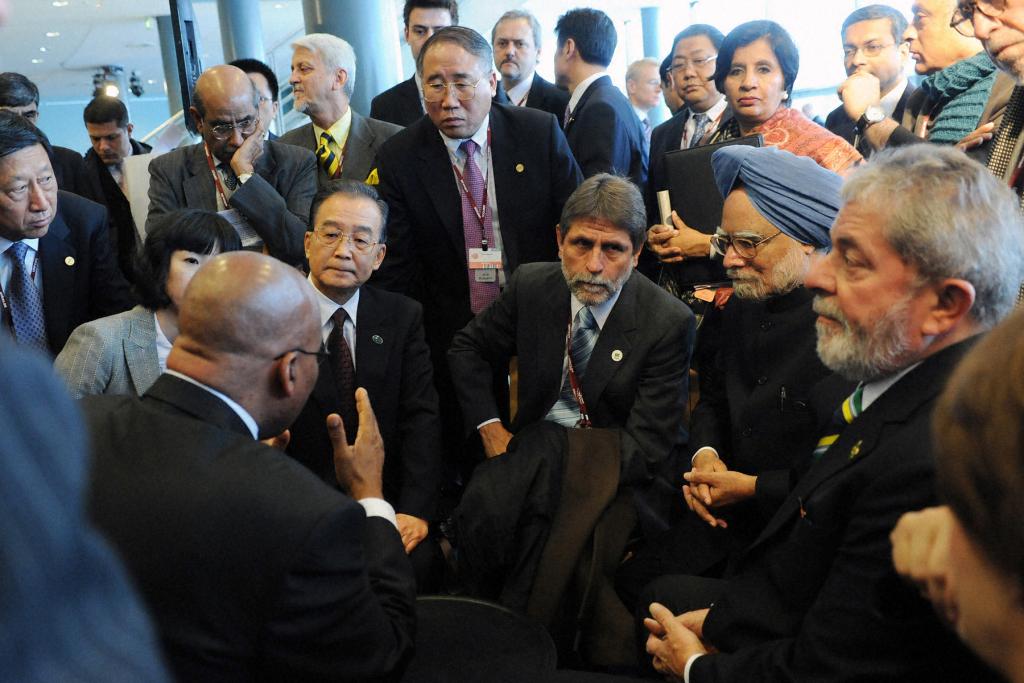
The accord, based on a “pledge and review” approach, included two appendices for Annex I and non-Annex I parties to include their quantified economy-wide emission reduction targets for 2020 and nationally appropriate mitigation actions, respectively. The agreement had no legal force, no long-term global emissions goal, and no mechanism to ensure national pledges would add up to sufficiently ambitious global reductions in emissions. Countries’ perceptions regarding differentiation and positions on mitigation and finance were still too far apart and overshadowed by the 2008 financial crisis to allow for a stronger outcome.
Although generally described as a low point in the UNFCCC’s history, the Copenhagen Accord had several important legacies. It set a USD 100 billion annual goal for climate finance mobilized by developed countries for developing countries to be achieved by 2020. It contained mitigation pledges from developed and developing countries. The accord also featured references to limit global warming to 2°C or 1.5°C. Finally, the experience also resulted in a stronger focus on transparency and inclusiveness. With its “bottom-up” approach to pledges, it also set the basis for the Paris Agreement.
G20 Members' and Vulnerable Countries' Per Capita GHG Emissions (excl. land use change and forestry)
A Dynamic Agreement for All, by All
A year later, the 2010 COP in Cancún, Mexico, restored “faith in the multilateral climate change process” (Akanle et al., 2010). Building on the USD 100 billion finance goal, the parties established the Green Climate Fund to channel a share of this funding. It also formalized the Technology Mechanism to support climate action in developing countries.
In 2011, countries started a new set of negotiations to develop a new protocol or agreement by 2015, applicable to all parties. While negotiations continued, in 2012 governments agreed on a second commitment period for the Kyoto Protocol (2013–2020) through the Doha Amendment. Negotiations intensified leading up to the 2015 Paris Climate Change Conference, but governments still struggled with differentiation. Developed countries and a growing number of developing countries supported recognizing “current socio-economic realities,” while many other developing countries sought to uphold the equity and CBDR principles and developed countries’ leadership role (Akanle et al., 2012).
A major breakthrough came when the US and China, the world’s two largest GHG emitters, announced a joint commitment to reaching an ambitious 2015 agreement that reflects the principle of common but differentiated responsibilities and respective capabilities (CBDR-RC), “in light of different national circumstances.” This language, which was included in the Paris Agreement (Article 2), recognized that “as [countries’] national circumstances evolve, so too will the[ir] common but differentiated responsibilities” (Rajamani, 2016, 508). In other words, while socio-economic development improves people’s lives, it tends to lead to higher emissions. This means countries’ contribution to the problem becomes bigger, but at the same time their ability to take more action also increases.
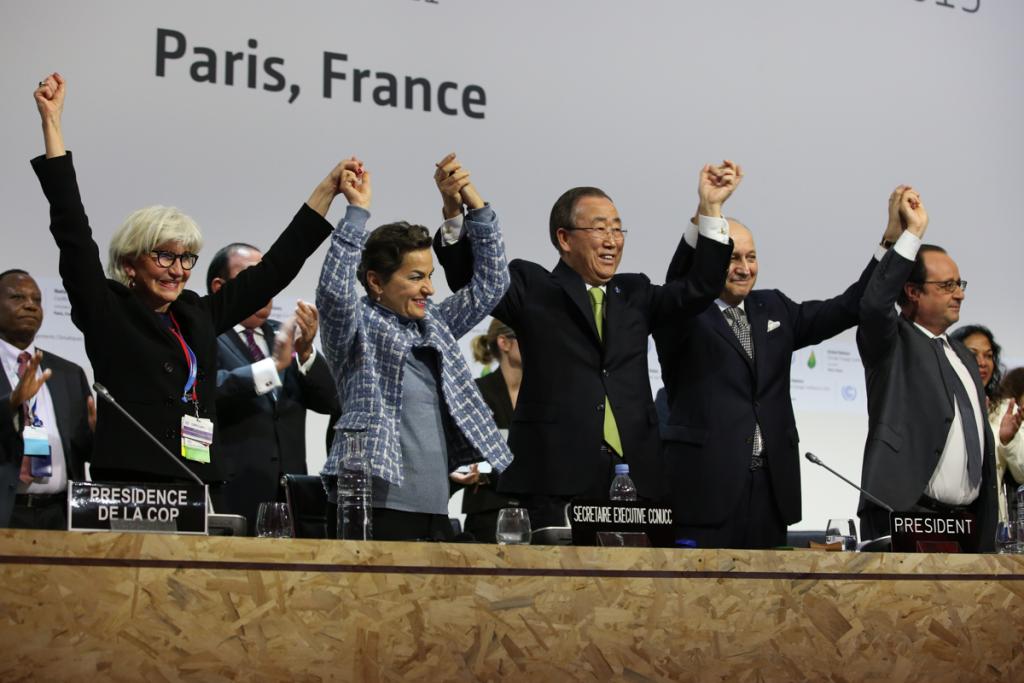
The 2015 Paris Agreement is the first multilateral climate change agreement that places legally binding obligations on emission reductions on all countries. It maintains the developed countries’ leadership role in finance (Article 9) and requires them to undertake economy-wide absolute emission reduction targets. However, it also requires mitigation efforts from developing countries and encourages them to move towards economy-wide targets (Article 4). As a further sign of a more nuanced approach to differentiation, the agreement lacks references to the Annex system.
The agreement is based on a bottom-up system of nationally determined contributions (NDCs). This is backed up by a periodic top-down Global Stocktake that assesses collective efforts in mitigation, adaptation, and support, considering both equity and science. As scientific anchors, the agreement refers to both the 1.5°C and 2°C temperature limits, as well as two long-term global goals: an expedited peak in global GHG emissions and net-zero emissions in the second half of the century. All parties are required to submit an NDC with a mitigation contribution every five years, and each successive NDC must be more ambitious. However, the content of the NDC is left to countries’ own discretion.
Some have argued the universality of the Paris Agreement came with a cost to its effectiveness: a purely top-down agreement with strict hard law obligations would not be feasible, so countries settled for self-differentiation in their NDCs and “naming and shaming” to ensure compliance. The success of the Paris Agreement—and by extension the global climate change regime—hangs on the pledges that major emitters bring to the table and turn into action over the next decade.
Into the Decisive Decade—Lessons Learned
The Paris Agreement entered into force less than a year after its adoption. By 2020, 188 countries and the European Union had joined the agreement. However, in 2017, US President Donald Trump announced he would withdraw from the agreement at the earliest possible date (November 2020).
The COVID-19 pandemic threw another wrench in the works, paralyzing global multilateral diplomacy and prompting a cancellation of all UNFCCC negotiations in 2020. However, in September 2020, China announced it would aim for carbon neutrality before 2060, marking a major increase in ambition. In November 2020, Joe Biden won the United States presidential elections and immediately pledged to rejoin the Paris Agreement. But more will be needed.
Climate Action Tracker estimates that net-zero emissions targets by the United States, China, the European Union, Japan, and South Korea, which together account for half of global GHG emissions, would put the 1.5˚C limit “within striking distance.” Nevertheless, significantly higher ambition and faster action is still needed, and the jury is still out on whether the pandemic will accelerate or hinder the pace of the clean energy transition, on which the success of the Paris Agreement largely depends.
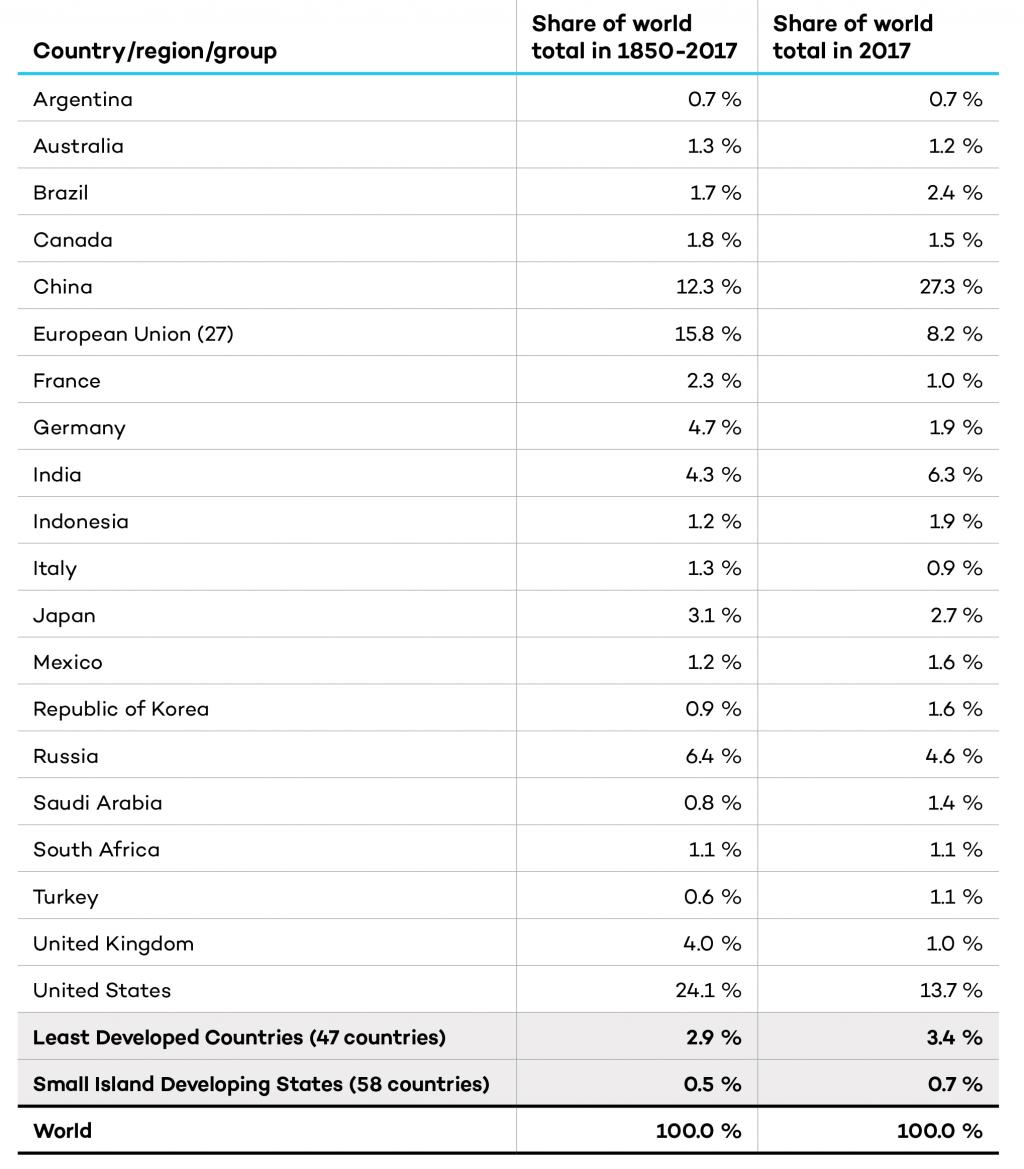
The UNFCCC has come a long way: the global regime has grown in weight, complexity, and participation. At the same time, as the science has expanded and people worldwide have witnessed the growing negative impacts of climate change, there has been an exponential growth of engagement of non-state and subnational actors, including businesses, cities, states, trade unions, and human rights and gender activists. In 2015, the Paris outcome formally recognized non-party stakeholders’ efforts and created a process—the Marrakech Partnership for Global Climate Action—to bring these activities under one umbrella.
Even so, civil society groups remain frustrated, arguing the intergovernmental process is not moving fast enough to deliver results that protect the most vulnerable. This frustration spilled to the streets as early as Copenhagen but was never more evident than at the 2019 Chile-Madrid Climate Change Conference (COP 25). After a year of unprecedented mobilization by the Fridays for Future movement, the conference failed to finalize the rules for carbon markets under the Paris Agreement. Even UN Secretary-General António Guterres agreed with civil society groups about the lack of progress.
I am disappointed with the results of COP 25. The international community lost an important opportunity to show increased ambition on mitigation, adaptation and finance to tackle the climate crisis. But we must not give up, and I will not give up.
What has been a major achievement is how countries agreed to adapt the concept of CBDR into an agreement applicable to both developed and developing countries. After years of arguing that only developed countries needed to reduce their GHG emissions, developing countries have accommodated a more dynamic interpretation of the concept. This was possible by both diplomatic skill and attention to priority issues for developing countries, namely adaptation, finance, technology, and capacity building. At the same time, another challenge for the Paris Agreement and the UNFCCC has been to keep the major emitters on board in an agreement that places the onus on them but simultaneously gives all countries a seat at the table.
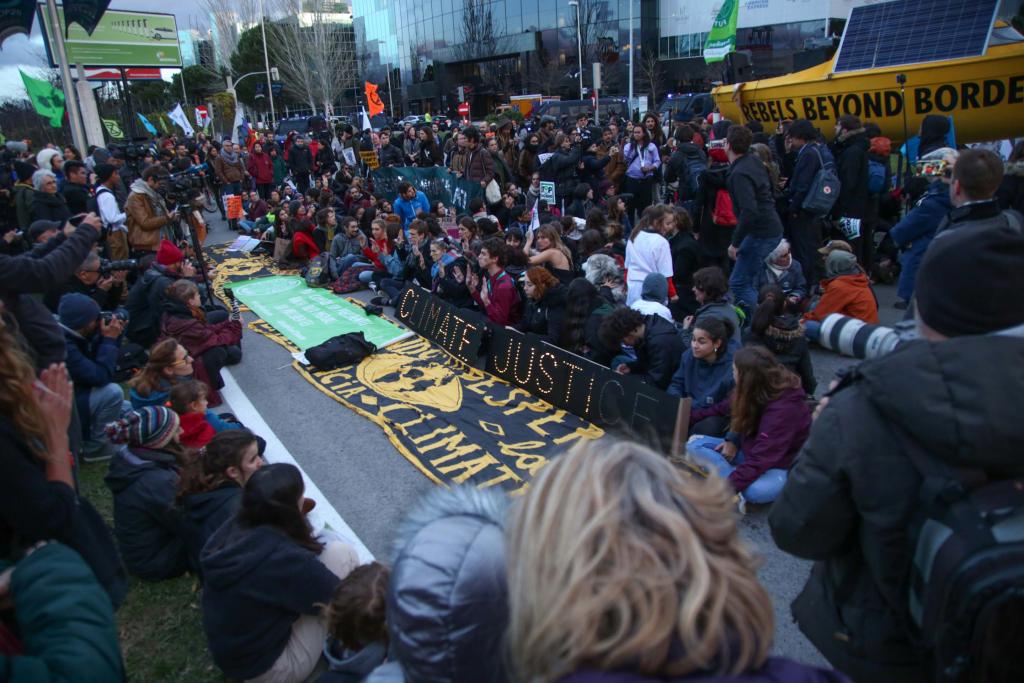
The history of the UNFCCC offers valuable lessons for future cooperation: reaching agreement may not be the main accomplishment. The true challenge, it seems, lies in designing instruments that can adapt over time to evolving science and changing levels of socio-economic development, and ensuring responsibility for action is equally distributed both intra- and inter-generationally and that no one is left behind. The UNFCCC’s history also reveals the ultimate challenge of governing the global commons, which is that even though multilateralism remains the best antidote to anarchy, it may be insufficient to avert catastrophic environmental damage unless global solidarity among the major polluters prevails.
Works Consulted
Aguilar, S. et al. (2005). “Summary of the eleventh Conference of the Parties to the UN Framework Convention on Climate Change and first Conference of the Parties serving as the Meeting of the Parties to the Kyoto Protocol: 28 November – 10 December 2005. Earth Negotiations Bulletin. https://enb.iisd.org/vol12/enb12291e.html
Akanle, T. et al. (2008). “Summary of the Fourteenth Conference of the Parties to the UN Framework Convention on Climate Change and Fourth Meeting of the Parties to the Kyoto Protocol: 1-12 December 2008. Earth Negotiations Bulletin. https://enb.iisd.org/vol12/enb12395e.html
Akanle, T. et al. (2010). “Summary of the Cancun Climate Change Conference: 29 November – 11 December 2010. Earth Negotiations Bulletin. https://enb.iisd.org/vol12/enb12498e.html
Akanle, T. et al. (2012). “Summary of the Doha Climate Change Conference: 26 November – 8 December 2012. Earth Negotiations Bulletin. https://enb.iisd.org/vol12/enb12567e.html
Appleton, A. et al. (2007). “Summary of the Thirteenth Conference of the Parties to the UN Framework Convention on Climate Change and Third Meeting of the Parties to the Kyoto Protocol: 3-15 December 2007. Earth Negotiations Bulletin. https://enb.iisd.org/vol12/enb12354e.html
Baumert, K. et al. (2005). Navigating the Numbers: Greenhouse Gas Data and International Climate Policy. World Resources Institute.
Bettelli, P., et al. (1997). Report of the third Conference of the Parties to the United Nations Framework Convention on Climate Change: 1–11 December 1997. Earth Negotiations Bulletin. https://enb.iisd.org/vol12/enb1276e.html
Biniaz, S. (2016). “Comma but Differentiated Responsibilities: Punctuation and 30 Other Ways Negotiators Have Resolved Issues in the International Climate Change Regime.” Michigan Journal of Environmental & Administrative Law, 6:1, 37–63. https://repository.law.umich.edu/mjeal/vol6/iss1/2
Gupta, J. (2014). “Setting the Stage: Defining the Climate Problem (Until 1990).” The History of Global Climate Governance. Cambridge University Press.
Rajamani, L. (2016). “Ambition and Differentiation in the 2015 Paris Agreement: Interpretative Possibilities and Underlying Politics.” International and Comparative Law Quarterly, 65 (2), 493–514. https://doi.org/10.1017/S0020589316000130.
UNEP. (2019). Emissions Gap Report 2019. UNEP.
Zillman, J.W. (2009). “A History of Climate Activities.” WMO Bulletin, 58 (3).
You might also be interested in
Border Carbon Adjustments: Trinidad and Tobago country report
This report consolidates, analyzes, and presents views and perspectives of stakeholders from Trinidad and Tobago on border carbon adjustment (BCA) schemes to contribute to the global debate on BCA good practices.
The Legacies of the Stockholm Conference
Fifty years after Stockholm, we face a triple planetary crisis of climate change, nature and biodiversity loss, and pollution.
The Roots of Forest Loss and Forest Governance
If lessons from past failures on deforestation are learned, forest protection could play a major role in reversing both climate change and biodiversity loss.
Indigenous Peoples: Defending an Environment for All
International environmental negotiations need to go beyond tokenistic participation of Indigenous Peoples to a genuine integration of their worldviews and knowledge.

